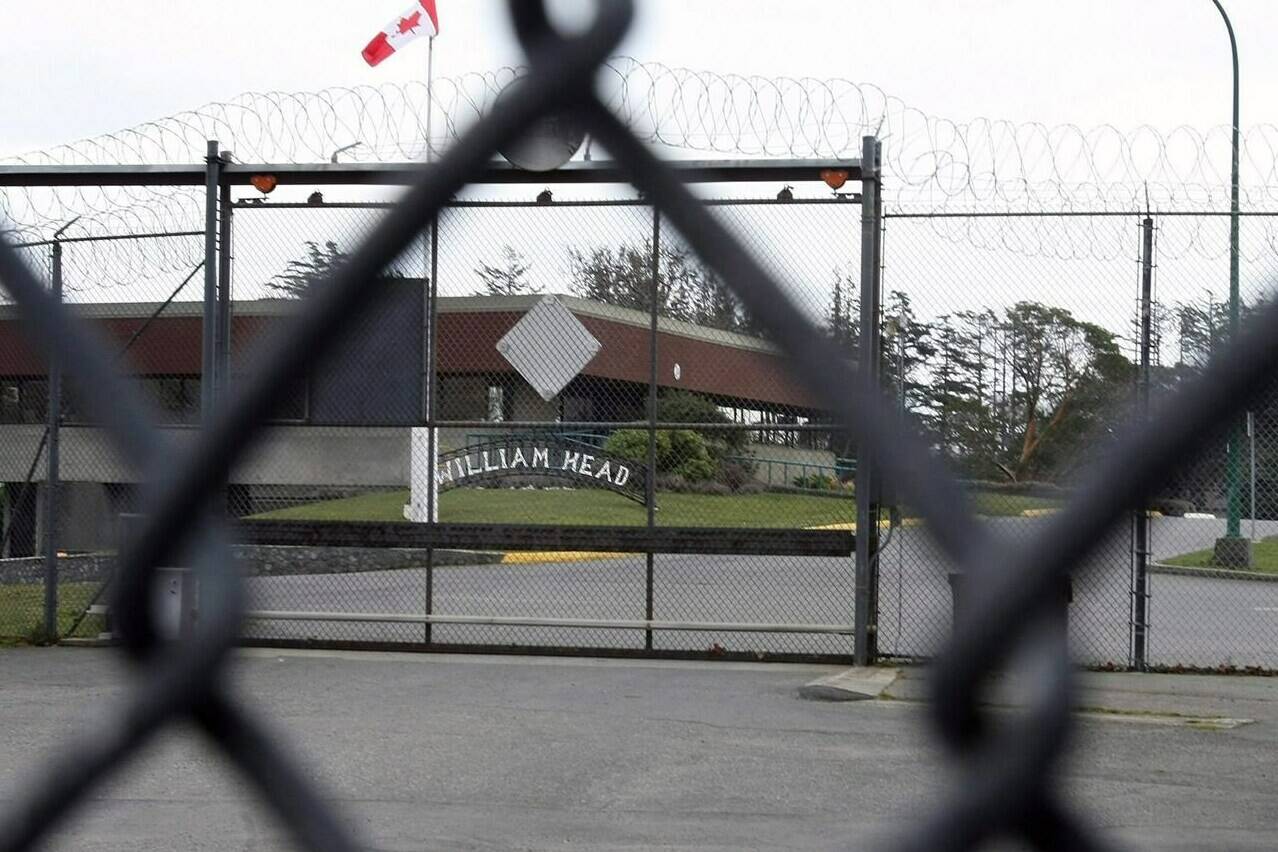By Sidney Coles, Local Journalism Initiative Reporter CAPITAL DAILY
Two metal security towers are soon going to be demolished at Greater Victoria’s William Head Institution.
Security towers, familiar in iconic movies like Escape from Alcatraz (1979) and Shawshank Redemption (1994) about prisons and famous real-life escapes have come to be familiar concepts in our collective imagination about what is typical carceral design.
William Head has decided to do away with theirs, as the status of the institution itself shifts over time and the towers no longer serve.
William Head has had a varied existence from the beginning but its purpose has always been to manage risk. After being used, in the late 1890s and 1900s, as an inspection station for people coming off ships arriving on the west coast, it became the resting place of 26 members of the Chinese Labour Corps during WWI. The small cemetery on its grounds tells the tale of the deadly threat of smallpox and influenza in that era.
To address another type of threat, William Head officially became a correctional facility in 1959 and has oscillated, over time, in its status as first a minimum, then medium security prison in 1974 and back to minimum security prison in 2022.
Past security breaches and their tragic consequences, have left a legacy of wariness around the efficacy of its security measures and the appropriateness of the presence of the institution’s more serious offenders in the rural community of Metchosin.
In 2022, James Busch and Zachary Armitage escaped from the institution. Busch was found guilty of the first-degree murder of Metchosin resident Martin Payne, allegedly to get a hold of the PIN number for his bank card during their escape. Armitage had escaped prison five times previously and was serving a 14-year sentence for robbery and aggravated assault.
“Their escape and the subsequent murder,” wrote Capital Daily investigative reporter Tori Marlan, “raise serious questions about how Busch and the other inmate wound up in a minimum-security prison—and why.”
During the Metchosin council meeting on Jan. 22, Coun. Jay Shuckin asked about how the institution determines who is safe enough to be housed there.
“We connect with medium security institutions or other institutions and we’ll look into their background, their profile in the past two years, if they have something that would increase their risk,” Deputy warden Henry Shea said. “We have a very carefully selected program to choose which people should come to William Head.”
And in terms of the security of the institution, he said, “we also have a very strong operational background.”
The institution has a capacity to house up to 200 men. Currently, 107 are serving a range of sentences there.
As for the Williams Head towers, assistant warden Peter Forbes explained that they had not been in use as a means of surveiling people since 2022 and their condition had become “very bad,” he said.
Assistant warden Forbes went on to describe some of the additional changes that are scheduled for the site. A couple of years ago, the institution received $7 million dollars to build a new maintenance building.
“That freed up four buildings at the far end of the institution,” he said, “that you can’t see from the front gate but you can see across from Weirs beach. Those buildings are going to be demolished,” he said, “along with the two towers.”
Guard towers have figured prominently in modern prison design as strong deterrents to residents thinking of misbehaving. They give the impression of ubiquitous and constant surveillance. They also give security personnel an extensive field of vision over open spaces. See and be seen. But way less fun.
“The security towers,” explained Forbes, “will be replaced by a camera tower on each side.” The institution has completed an upgrade to its systems to increase the security and “the new 360-degree cameras will give them much better resolution,” he said.
During their presentation, Forbes recognized the community’s potential sensitivity of “the optics of taking the two metal security towers down.”
Officers who work there no longer carry firearms and there is no longer razor wire around its perimeter. Shea said, “that while they are only mandated to have two monitoring officers, they received additional support from Corrections Canada to have three.”
“When something happens,” Shea said (without actually using the word escape), “we think that communication is very important. We need to let our community partners know, then maybe they can go and warn some people if it’s necessary, and we’ll have RCMP get involved as soon as possible. We are in the risk management business.”
The two were thanked by council for their efforts. Mayor Marie-Terese Little commended the work of the institution and the residents themselves.
Inmates participate in a community service program which, as the mayor stated, “has been a great benefit to the Metchosin community” for their work on parks, trails and the maintenance of the community garden.
Forbes explained that the inmates also did a toy drive for Ukrainian children and “have raised more than $7,000 for local food banks.” Considering men there only make $5/day “it’s a big achievement.”
READ ALSO: William Head prison escapees charged in homicide of Metchosin man
READ ALSO: Facts about William Head Institution

